On June 3-4, 2024, Chair Prof. Joseph Hun-wei Lee, President of Macau University of Science and Technology (M.U.S.T.) led a delegation to visit two research bases of the University of Maryland Center for Environmental Sciences (UMCES): the Horn Point Laboratory (HPL) which is located in the east side of Chesapeake Bay (CB), as well as the Institute of Marine and Environmental Technology (IMET) in Baltimore. The M.U.S.T. team conducted in-depth exchanges and discussions on environment and climate change issues with the professors and scholars at the center.
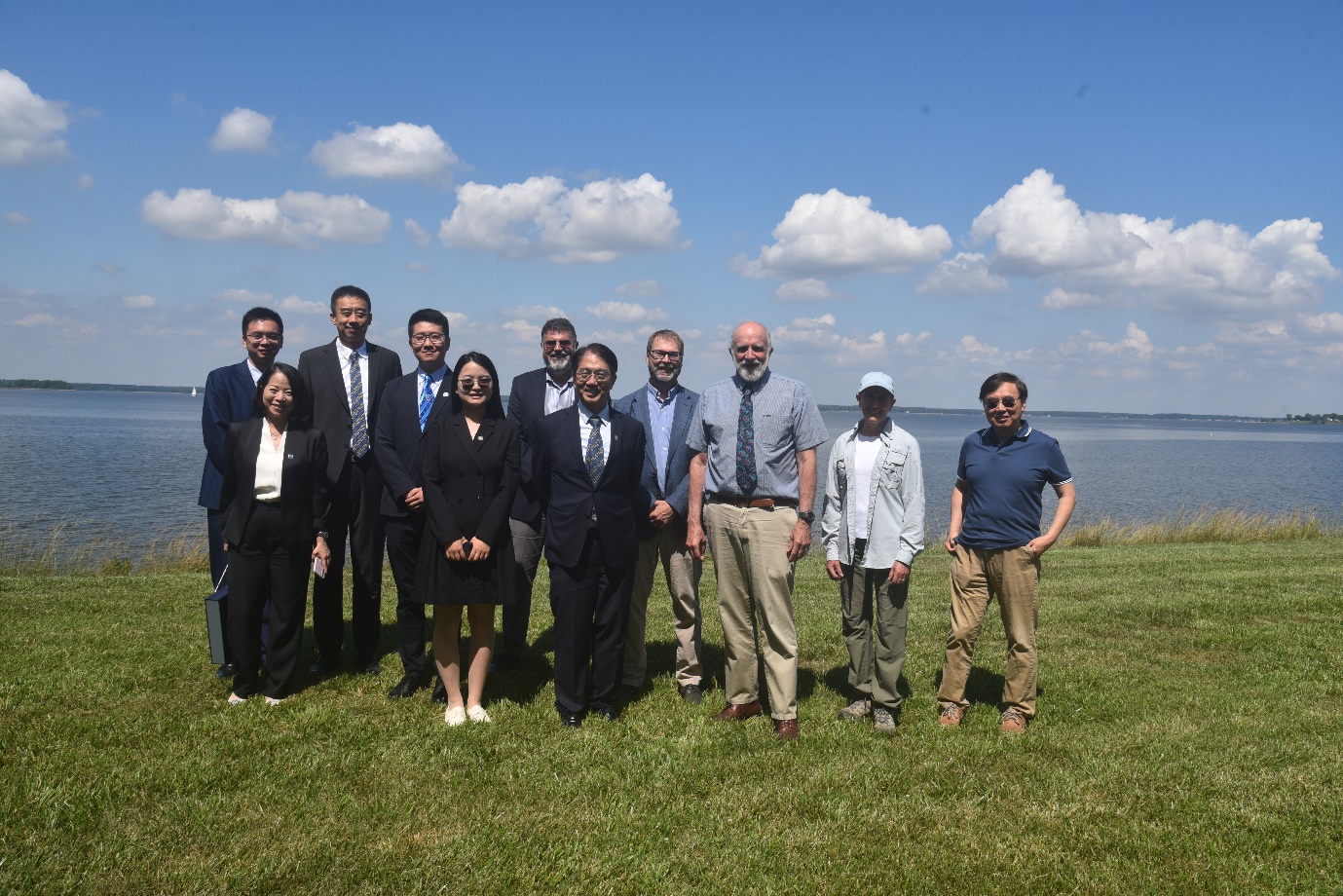
Delegation with leaders and professors of UMCES at Horn Point Lab
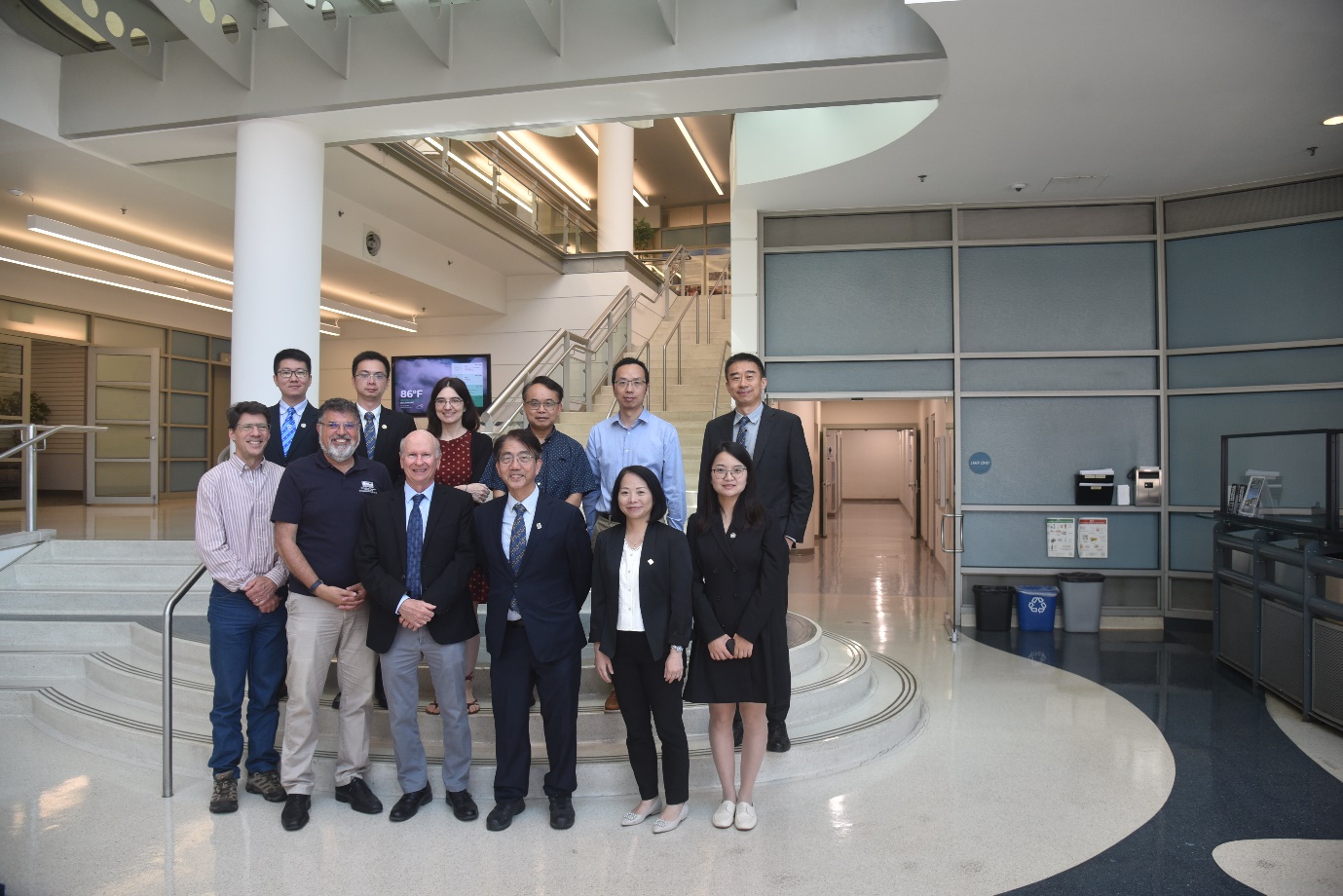
Delegation with leaders and professors of UMCES at IMET in Baltimore
UMCES is a Graduate School branch campus of the University of Maryland, a scientific research center with nearly one hundred years’ history and a world leader on marine and estuarine eutrophication research. It is dedicated to environmental science, estuarine coastal and marine science research. UMCES and the Maryland state government attach special importance to issues related to climate change and adaptation, with commitment to environmental education and public engagement.
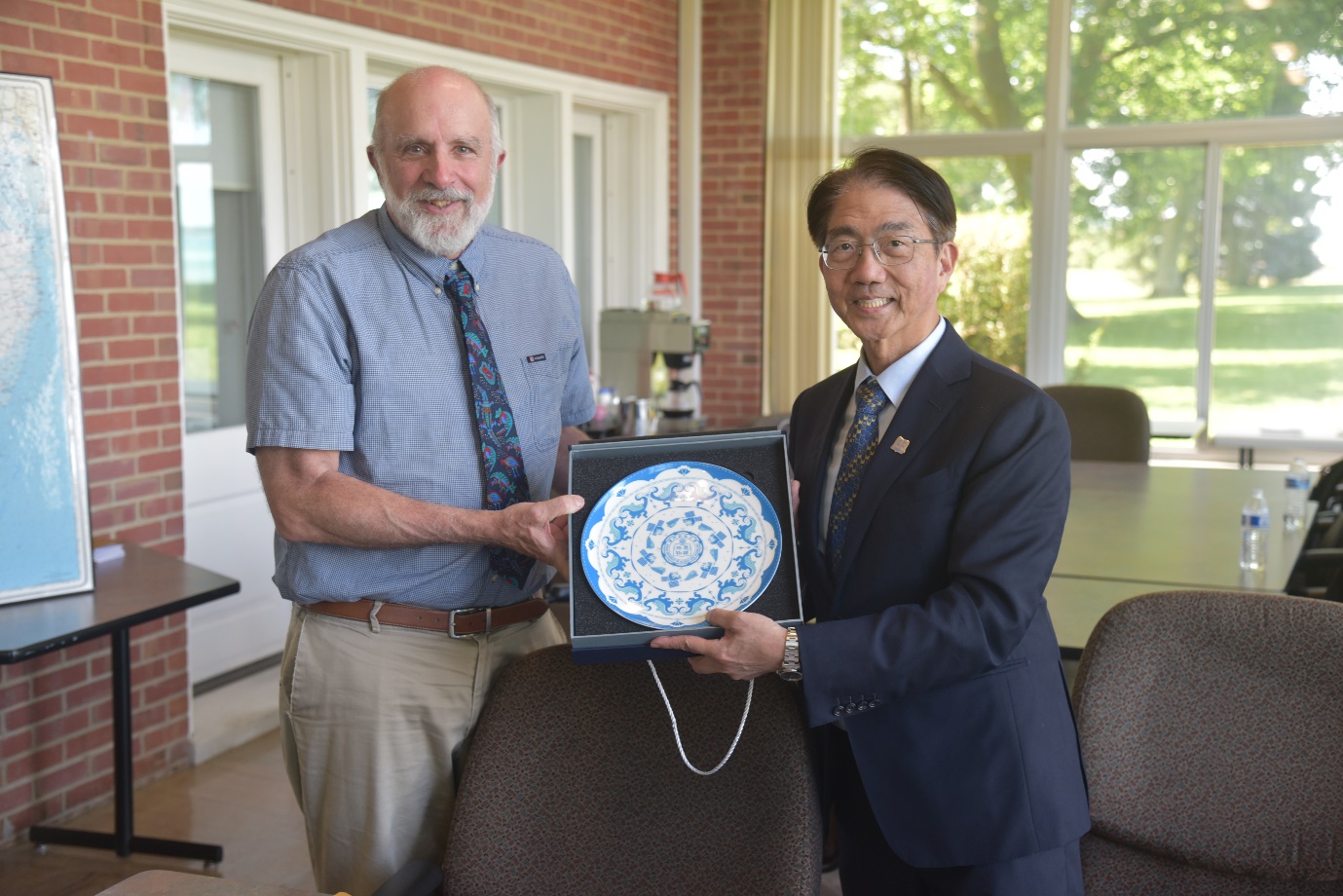
President Joseph Hun-wei Lee presented a souvenir to Dr. Bill Dennison, President of UMCES
The delegation was warmly received by Dr. Bill Dennison, President of UMCES, Dave Nemazie, Chief of Staff, and Dr. Russell Hill, Executive Director of IMET.
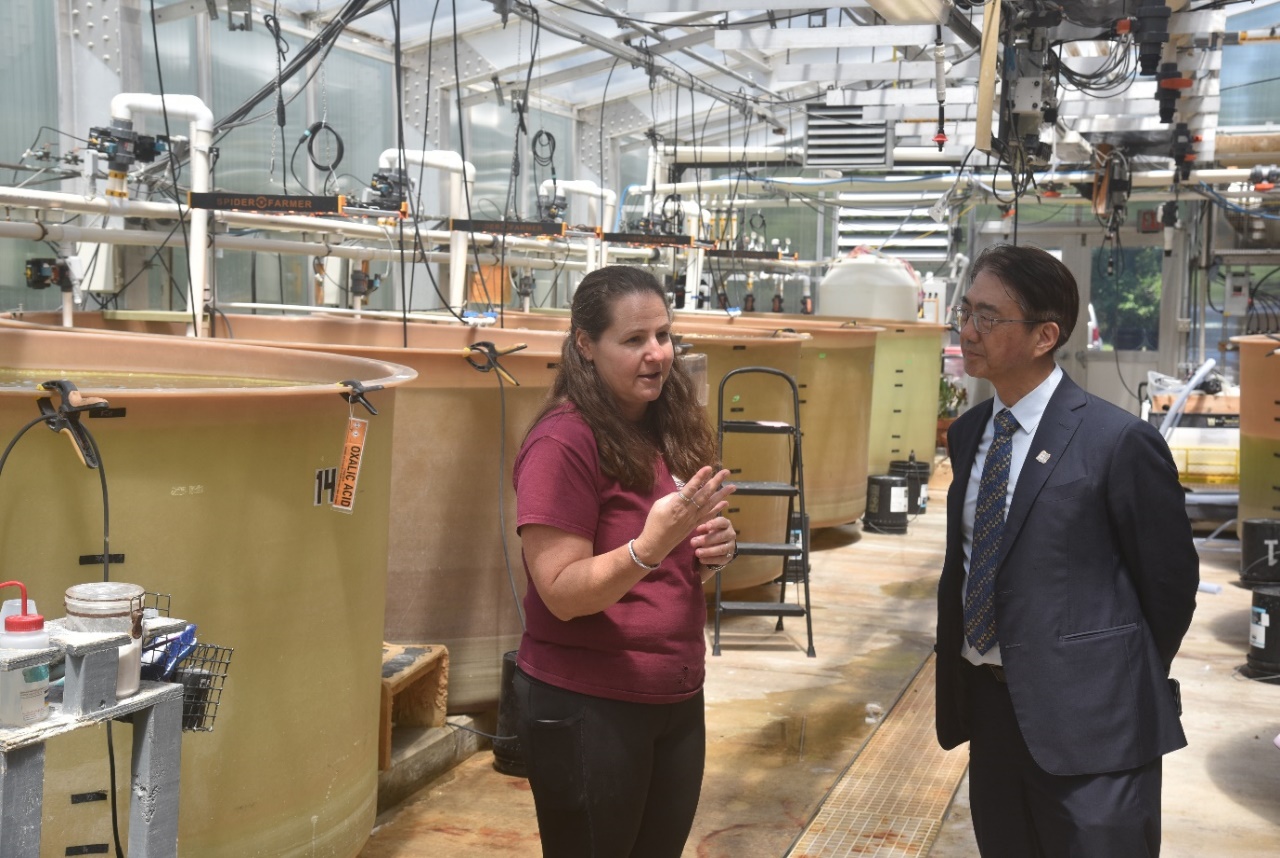
UMCES Horn Point Lab Oyster Hatchery Facility
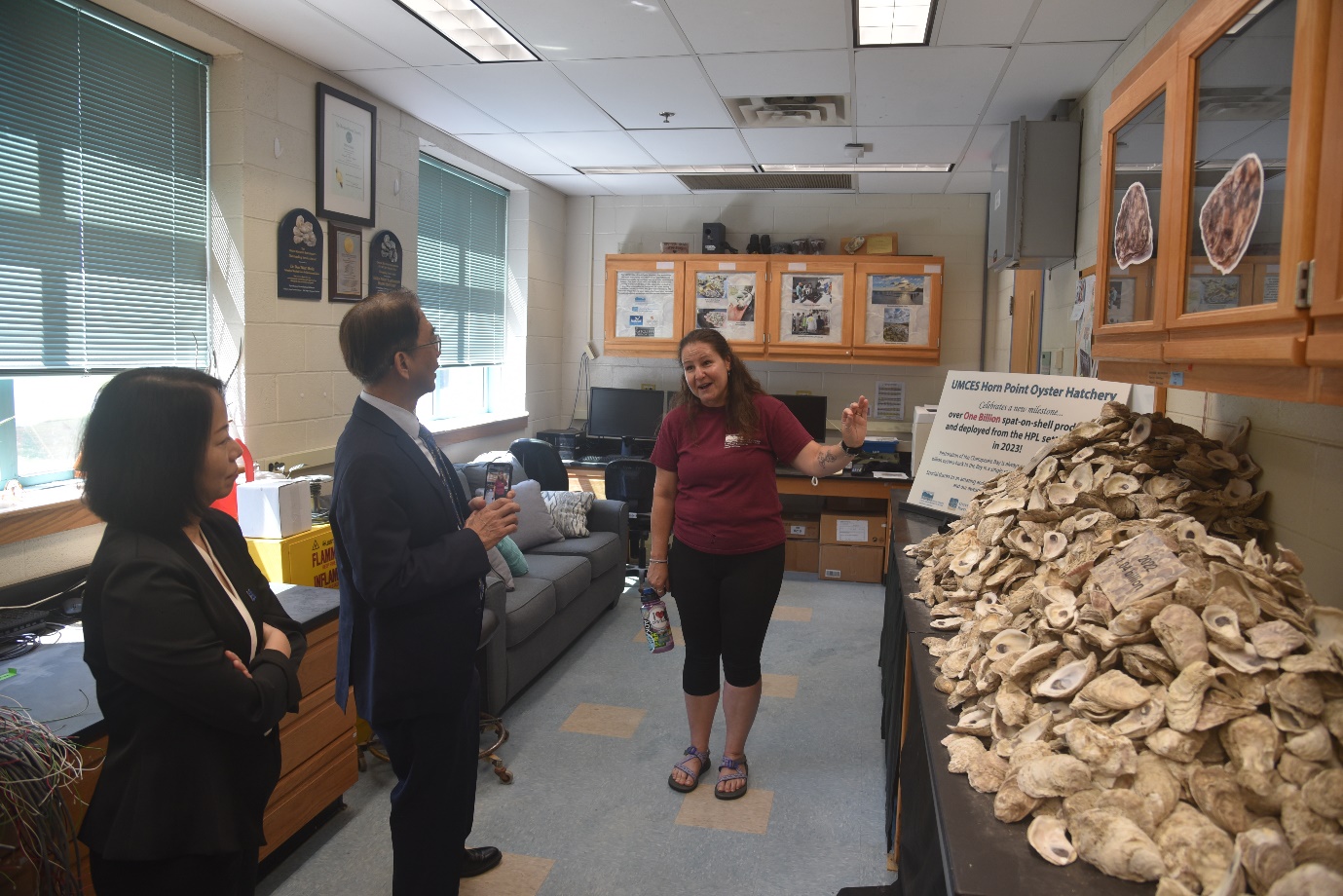
UMCES Horn Point Lab oyster production over the years
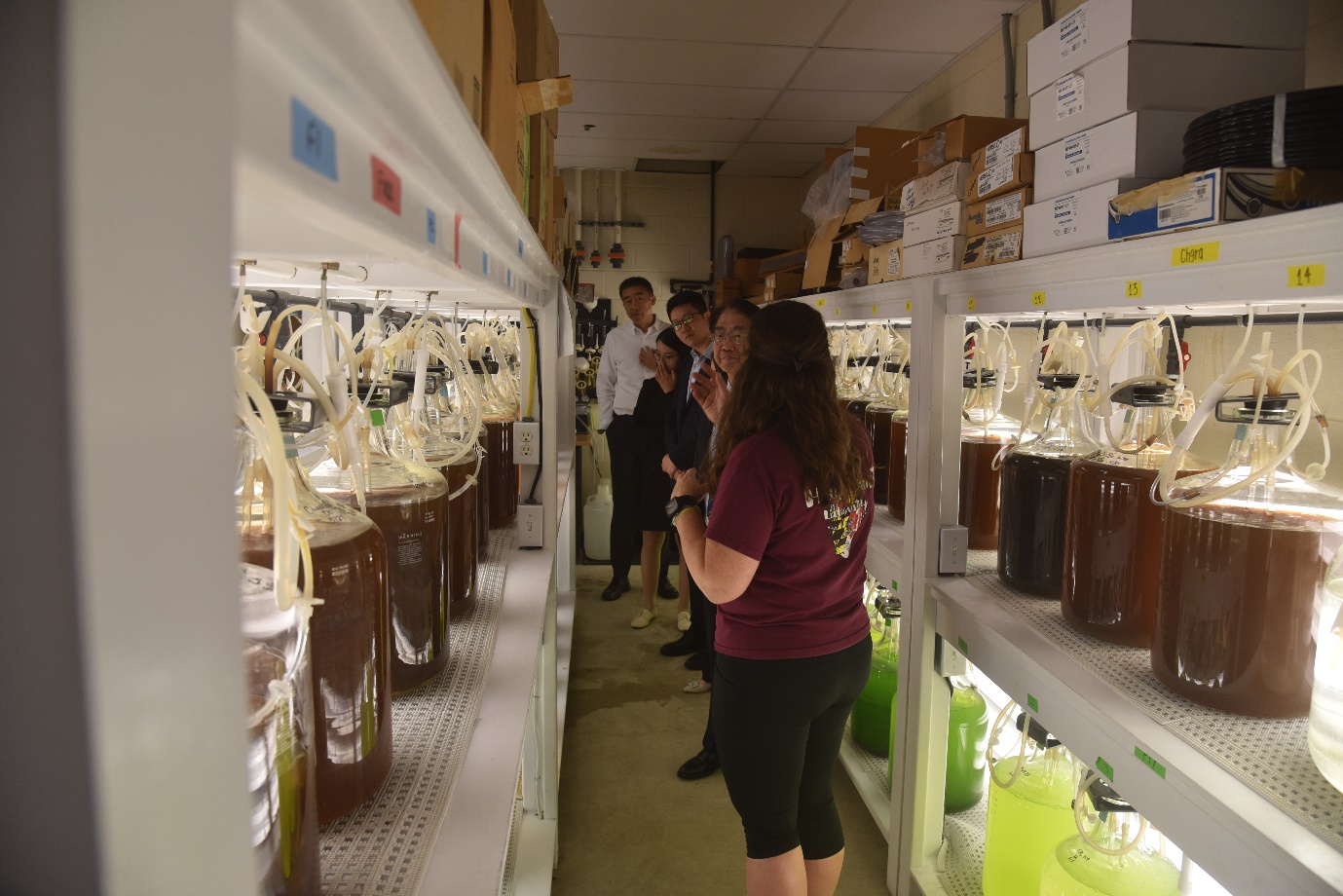
Algae feed cultivation for oyster larvae
In addition to the research exchanges, the delegation visited the Oyster Hatchery Laboratory at HPL and the Aquaculture Research Center at IMET. As one of the largest oyster hatcheries on the east coast of the United States, the Oyster Hatchery Laboratory produces a variety of oyster larvae for use in oyster production, research, environmental remediation and public education. Center Manager Stephanie Alexander introduced the technical difficulties, breeding process, yield and application examples of oyster breeding. The Aquaculture Research Center covers 1,800 square meters and is equipped with advanced core facilities to carry out aquaculture technology research on the optimal conditions for aquaculture of marine fish species such as the Atlantic salmon – a valuable species with a declining population. The staff also introduced the different fish species bred in the laboratory and the environmentally sustainable equipment, as well as the design of the recirculating sea water system, the environmental (salinity and temperature) control, waste treatment and nutrient recycling, as well as renewable energy from biogas utilization.
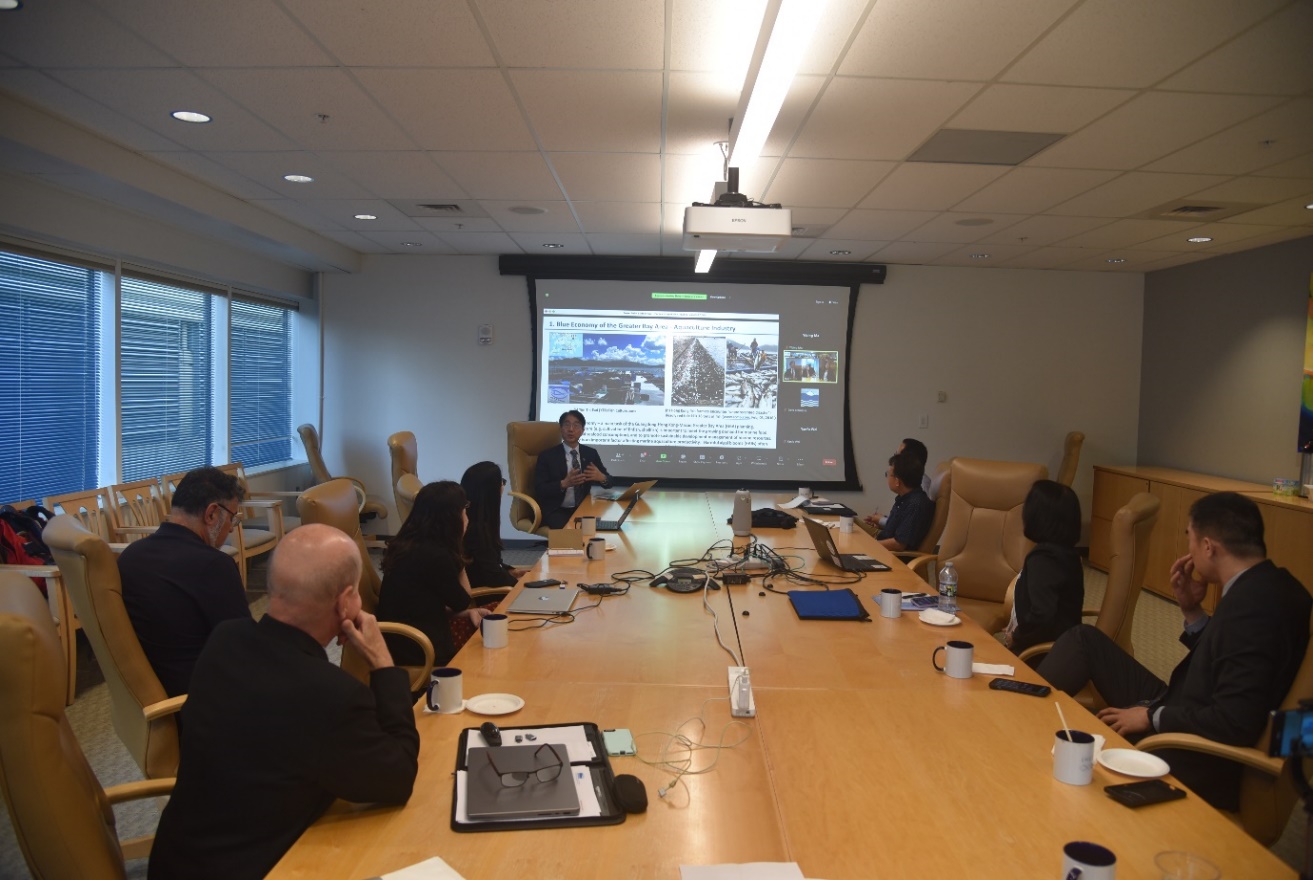
UMCES and MUST discussing harmful algal bloom research at the IMET forum
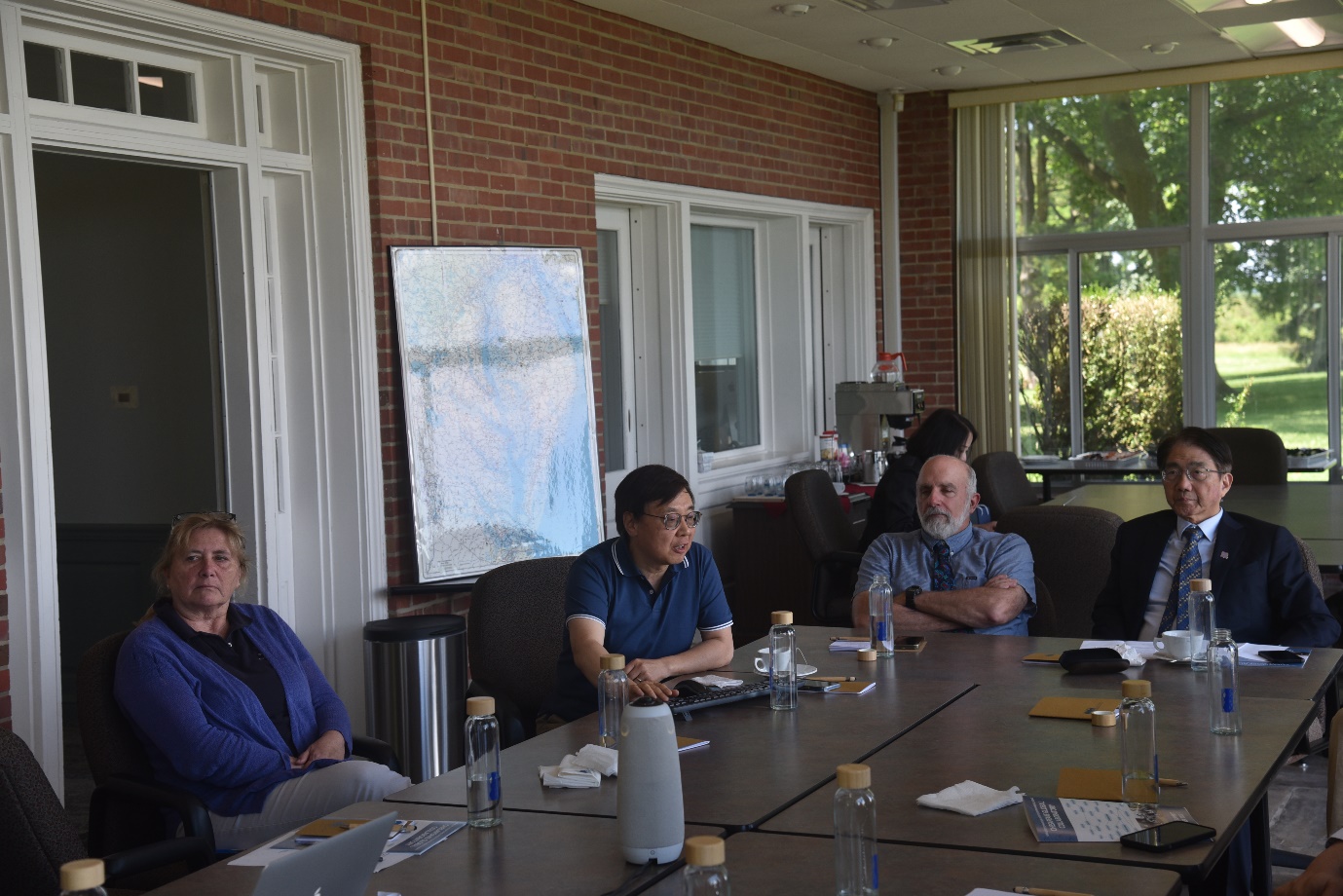
UMCES scholars sharing experiences at the Horn Point Lab
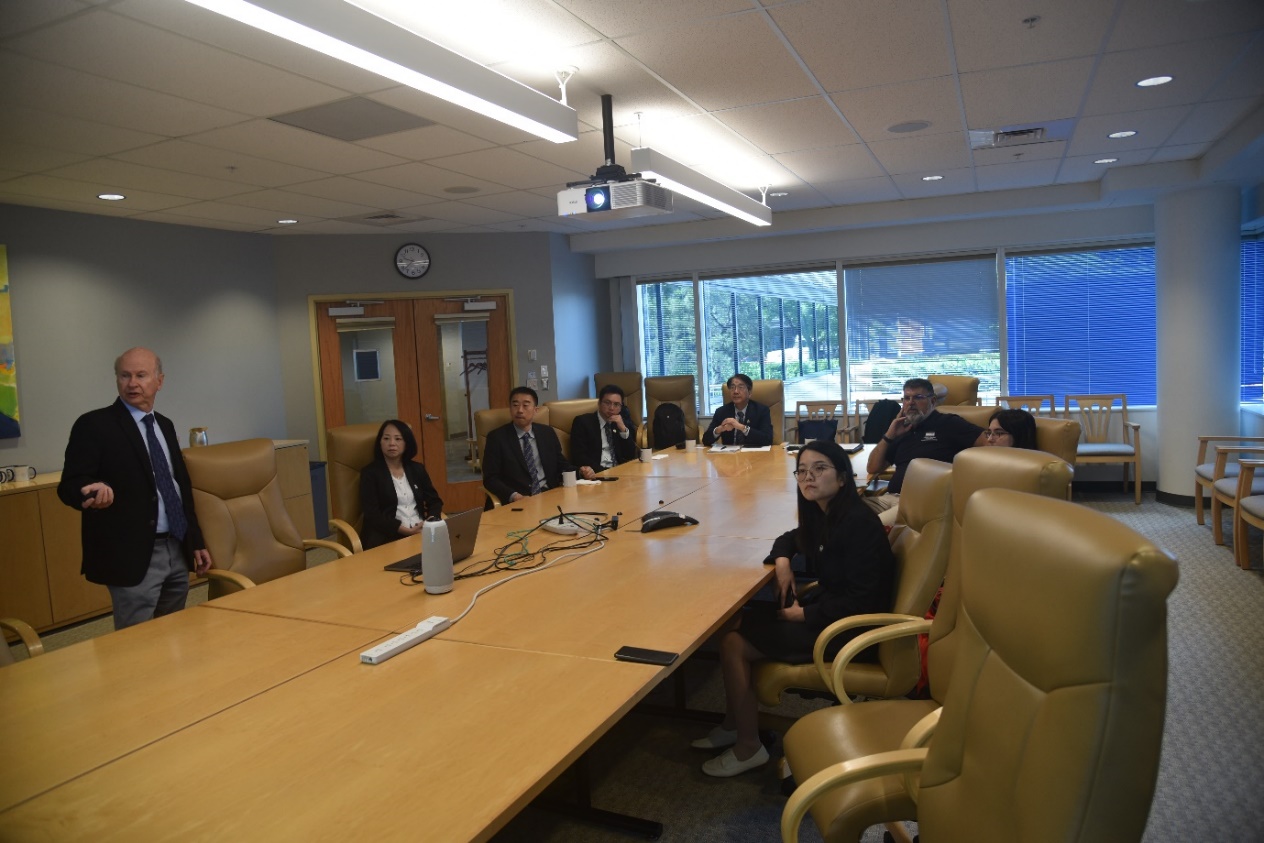
Dr. Russell Hill, Executive Director of UMCES IMET, delivered a report
The focused discussion forum was held over two days. On June 3, the discussion mainly focused on eutrophication of water bodies. Dr. Mike Sieracki, Director of Horn Point Laboratory, started by giving an overview to the laboratory; Dr. Bill Dennison, President of UMCES, introduced the eutrophication and restoration of CB Bay; Prof. Ma Yibing, Dean of the Macao Environmental Research Institute gave an overview of the National Observation and Research Station of Coastal Ecological Environment in Macao (NSM); Dr. Ming Li (HPL) introduced the impact of climate change on hydrodynamics and water quality in CB Bay; M.U.S.T. Faculty of Innovation Engineering-Department of Environmental Science and Engineering (FIE-DESE) Assistant Prof. Zhang Kai introduced the current status of microplastics and plasticizer pollution in coastal urban drainage channels; Dr. Judy O'Neil (HPL) introduced the harmful algal bloom situation in CB Bay; Dr. Heath Kelsey (HPL) introduced the achievements in recent years of an innovative popular science project - Chesapeake Bay Report Card; Dr. Lori Staver (HPL) introduced the ecological restoration research on Poplar Artificial Island; M.U.S.T. FIE-DESE Assistant Prof. Li Ying introduced the impact of seawater intrusion on heavy metals and carbon transformation processes; Dr. Xin Zhang (HPL) gave a report exploring nitrogen and phosphorus imbalances on a global scale.
On June 4, the discussion mainly focused on pollution control measures and response plans. Dr. Russell Hill started by giving an overview of IMET; Dr. Eric Schott (IMET) introduced the ecological restoration work of Baltimore Harbor in recent years and the improvement of harbor water quality; Dr. Isabella Bertani (IMET) introduced the fully coupled three-dimensional Chesapeake Bay airshed-watershed-estuary model, which is used to predict the impact of climate change on rainfall and water quality of CB as a tool for environmental management. President Lee introduced the prediction of harmful algal blooms in subtropical coastal waters, which is used for algal bloom early warning by establishing a model for real-time monitoring of algal species and cell density. Dr. Yantao Li (IMET) introduced relevant research on algae-based biofuels; Dr. Feng Chen (IMET) introduced algal biotechnology research on carbon reduction in waste treatment plants; M.U.S.T. FIE-DESE Assistant Prof. Wei Yanfu introduced nanotechnology for efficient phosphorus removal through activated clay minerals and magnetite, which can be used to treat water eutrophication.
During the seminar, the two parties conducted in-depth discussions in water quality and coastal ecological environment research and looked forward to drawing on the experience of CB to help solve the water pollution problem in the Greater Bay Area. They exchanged opinions on water quality modelling, post-graduate training, industry-university-research integration and other aspects. A preliminary consensus was reached on establishing further cooperation and personnel exchanges.
This in-depth exchange visit not only helps to increase the visibility of M.U.S.T. in overseas universities, but also enhances the connection and cooperation between M.U.S.T. and the University of Maryland, laying the foundation for long-term collaboration in environmental research and climate change issues in the future. Through exchanges, a systematic understanding of the cutting-edge technology and practical experience in CB pollution remediation was achieved, which has important implications for transforming environmental research into practical applications. The cross-disciplinary cooperation model helps accelerate the transformation and industrialization of research results and improves the realization of their benefits.
The M.U.S.T. delegation members also include Prof. Li Xiaodong, Assistant Dean of Faculty of Innovation Engineering, Assistant Prof. Cai Qihai of the School of Business, and Ms. Sheryl Lee, Faculty Secretary of the Faculty of Innovation Engineering.





